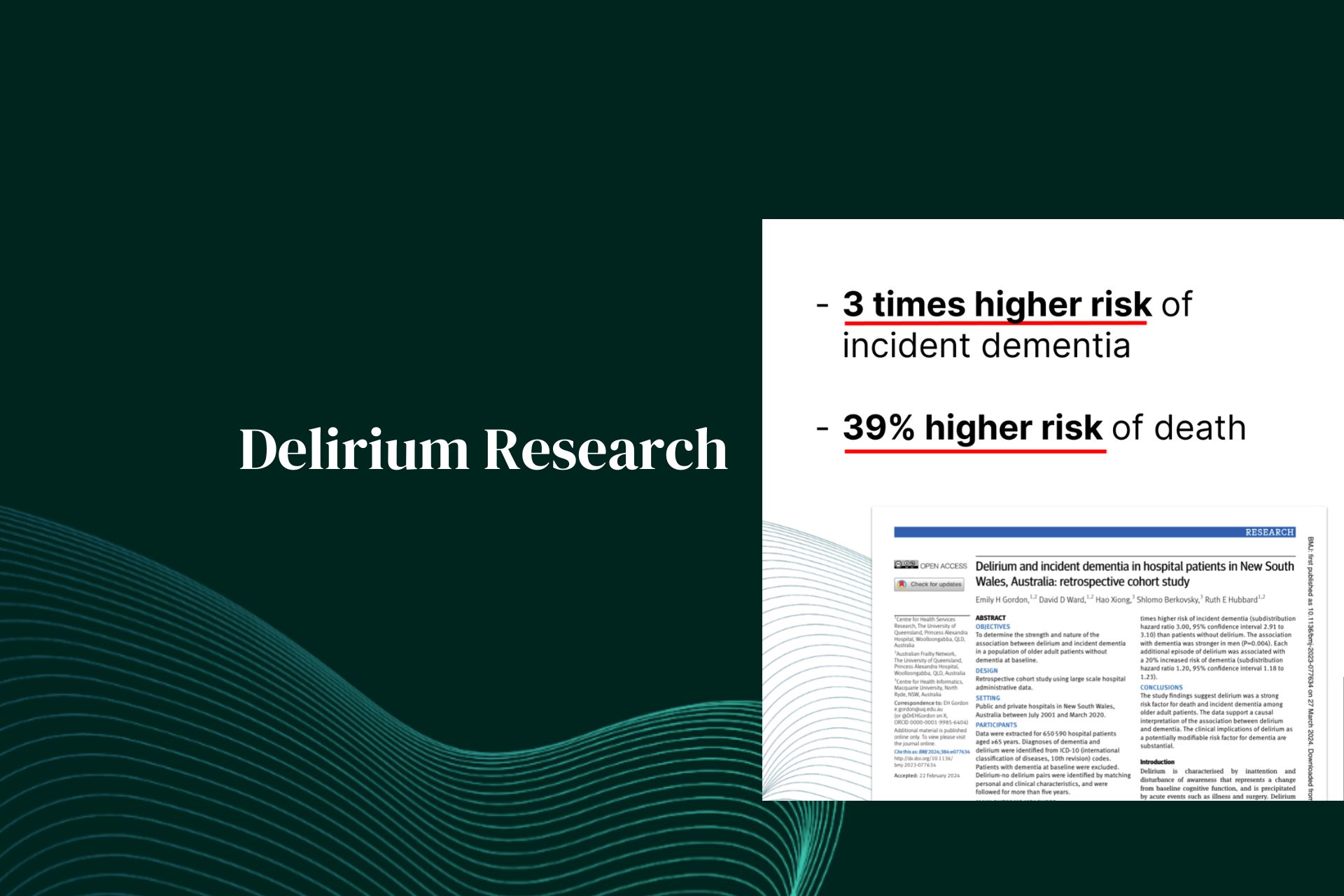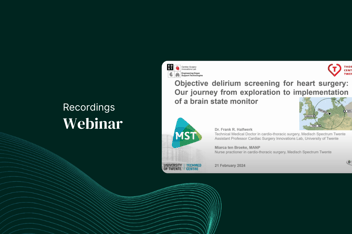Strong association between delirium and incident dementia in older adults without dementia at baseline

TIME FOR CHANGE - REDUCE DEMENTIA BURDEN GLOBALLY. A recent retrospective cohort study (650.590 hospital patients aged ≥65 years) published in the BMJ that once again highlights the importance of screening and treating delirium.
Delirium and incident dementia in hospital patients in New South Wales, Australia: retrospective cohort study
BMJ 2024; 384 doi: https://doi.org/10.1136/bmj-2023-077634 (Published 27 March 2024)
Cite this as: BMJ 2024;384:e077634
Data showed a strong association between delirium and incident dementia in older adults without dementia at baseline. “Patients with delirium had 39% higher risk of death (hazard ratio 1.39, 95% confidence interval 1.37 to 1.41) and three times higher risk of incident dementia (subdistribution hazard ratio 3.00, 95% confidence interval 2.91 to 3.10) than patients without delirium.”
“Delirium is a factor that could triple a person’s risk of dementia. Therefore, delirium prevention and treatment are opportunities to reduce dementia burden globally.”
Abstract
Objectives
To determine the strength and nature of the association between delirium and incident dementia in a population of older adult patients without dementia at baseline.
Design
Retrospective cohort study using large scale hospital administrative data.
Setting
Public and private hospitals in New South Wales, Australia between July 2001 and March 2020.
Participants
Data were extracted for 650 590 hospital patients aged ≥65 years. Diagnoses of dementia and delirium were identified from ICD-10 (international classification of diseases, 10th revision) codes. Patients with dementia at baseline were excluded. Delirium-no delirium pairs were identified by matching personal and clinical characteristics, and were followed for more than five years.
Main outcome measures Cox proportional hazards models and Fine-Gray hazard models were used to estimate the associations of delirium with death and incident dementia, respectively. Delirium-outcome dose-response associations were quantified, all analyses were performed in men and women separately, and sensitivity analyses were conducted.
Results
The study included 55 211 matched pairs (48% men, mean age 83.4 years, standard deviation 6.5 years). Collectively, 58% (n=63 929) of patients died and 17% (n=19 117) had a newly reported dementia diagnosis during 5.25 years of follow-up. Patients with delirium had 39% higher risk of death (hazard ratio 1.39, 95% confidence interval 1.37 to 1.41) and three times higher risk of incident dementia (subdistribution hazard ratio 3.00, 95% confidence interval 2.91 to 3.10) than patients without delirium. The association with dementia was stronger in men (P=0.004). Each additional episode of delirium was associated with a 20% increased risk of dementia (subdistribution hazard ratio 1.20, 95% confidence interval 1.18 to 1.23).
Conclusions
The study findings suggest delirium was a strong risk factor for death and incident dementia among older adult patients. The data support a causal interpretation of the association between delirium and dementia. The clinical implications of delirium as a potentially modifiable risk factor for dementia are substantial.
Delirium and incident dementia in hospital patients in New South Wales, Australia: retrospective cohort study
https://www.bmj.com/content/384/bmj-2023-077634
Delirium and incident dementia in hospital patients in New South Wales, Australia: retrospective cohort study
https://www.bmj.com/content/384/bmj-2023-077634




